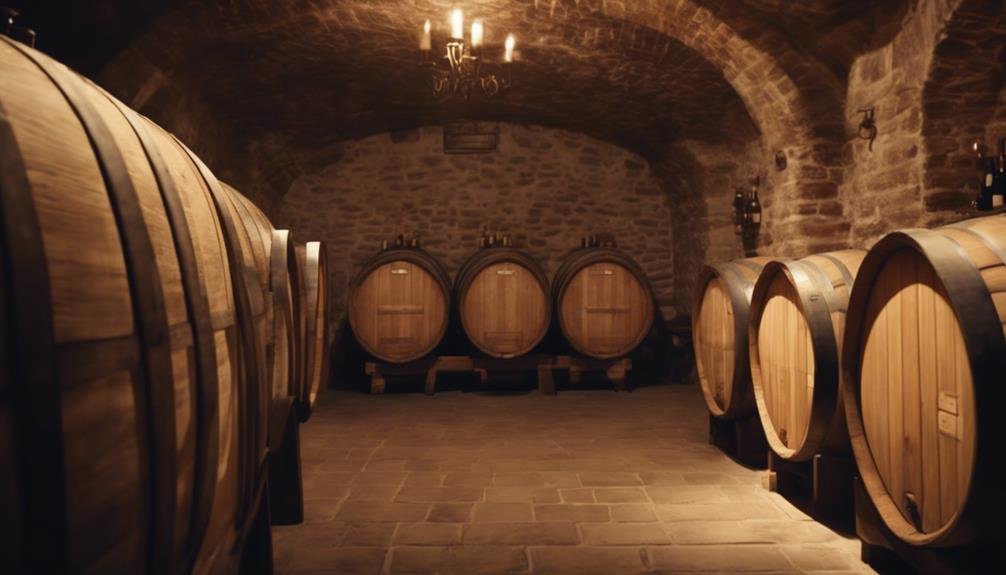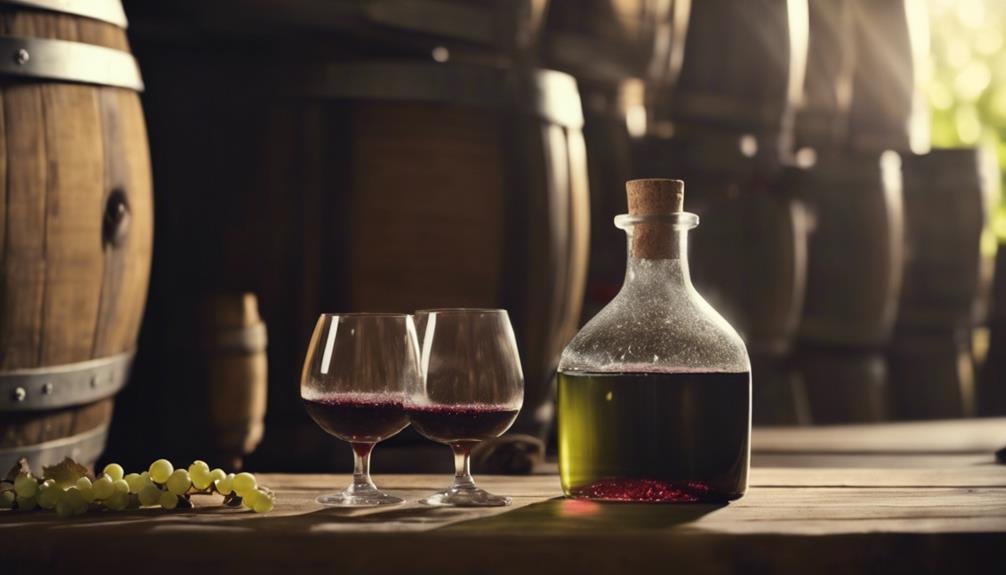Revealing wine lees exposes a world of flavor richness, texture enhancement, and aromatic depth in winemaking. The autolysis process within lees releases sugars and amino acids, elevating the wine's complexity. Techniques like lees stirring and prolonged contact amplify mouthfeel, aromas, and structural elements. Careful management is key to avoid overpowering the wine, while strategic lees handling can deepen the wine's character. The unique flavors of lees-aged wines range from toasty, yeasty notes in whites to hints of caramel, smoke, and spices. Exploring these secrets can lead to an appreciation of the transformative power of wine lees.
Importance of Wine Lees in Winemaking
In the world of winemaking, the significance of wine lees lies in their ability to enhance the texture, flavor, and complexity of the final product. The science behind lees aging in winemaking involves the fermentation process where leftover yeast particles undergo autolysis, releasing sugars and amino acids that contribute to the sensory impact of the wine.
Benefits of lees aging include adding weightiness and body to the wine, resulting in a creamier, richer, and fuller-bodied taste. The duration of lees aging can range from a few months to several years, with some wines undergoing bâtonnage to maximize flavor extraction. This process enhances the depth and complexity of flavors, making wines aged on lees like Albariño, Muscadet Sèvre et Maine, Chardonnay, and Vintage Champagne stand out for their unique characteristics.
Techniques for Maximizing Lees Influence
Utilizing specialized techniques in winemaking can optimize the influence of wine lees on the texture, flavor, and complexity of the final product.
Lees stirring, also known as lees contact, is a key method for maximizing the impact of lees on wine. This process involves gently stirring the lees back into the wine to enhance its mouthfeel and aromatics.
By promoting contact between the wine and lees, flavors and textures develop more fully, resulting in a richer and more nuanced final product. Winemakers carefully monitor this process to make sure that the desired characteristics are extracted without overpowering the wine.
Through strategic lees stirring and prolonged lees contact, winemakers can achieve wines with enhanced depth, structure, and complexity.
Exploring the Unique Flavors of Lees-aged Wines

Delving into the distinctive flavors imparted by lees aging reveals a world of complexity and richness in wines that captivate the discerning palate. Lees nuances bring about a spectrum of flavor profiles in wines, offering unique characteristics that set them apart.
These nuances can include hints of toast, bread, cheese, and floral notes in sparkling wines, while white wines may showcase yeast-like flavors with additional aromas from oak barrels. The taste of wine lees introduces elements like sweet caramel, smoke, clove, and vanilla, creating a sensory experience that evolves with each sip.
Through the duration of lees aging, which can span from a few months to several years, wines undergo transformations that enhance their depth and complexity, making them a delight for enthusiasts seeking new and intriguing tasting experiences.
Frequently Asked Questions
Can Wine Lees Be Reused in the Winemaking Process?
Wine lees can be reused in winemaking for sustainability. Recycling lees through fermentation enhances flavor profiles. This process contributes to environmental responsibility and adds complexity to wines. Implementing lees recycling can positively impact both the wine quality and the environment.
Do All Winemakers Use Lees Aging for Their Wines?
While lees aging is a common practice, not all winemakers utilize this technique. Some opt for alternative methods or modern innovations to achieve desired textures and flavors. Sustainability practices and traditional techniques also play roles in winemaking choices.
Are There Any Health Benefits Associated With Consuming Wine Lees?
Consuming wine lees may offer potential health benefits due to their rich content of amino acids, fatty acids, and antioxidants. Culinary uses include adding depth to dishes. However, it is advisable to consult a healthcare provider before consuming to guarantee safety.
How Do Different Grape Varieties Influence the Lees Aging Process?
Grape varietal influences the lees aging process by contributing unique flavors, aromas, and textures to wines. The composition dynamics of lees interact with the characteristics of each grape variety, enhancing complexity and depth in the final product.
Can the Presence of Wine Lees Affect Wine Allergies or Sensitivities?
The presence of wine lees can impact wine allergies or sensitivities. Lees can potentially cause allergic reactions in individuals sensitive to yeast or proteins present in the lees. Understanding this impact is essential for wine consumers.
Conclusion
To sum up, the alluring intricacies of wine lees enhance the essence of various wines, adding depth and richness to their profiles. Through meticulous aging techniques, winemakers craft exquisite flavors and textures that tantalize the taste buds.
Explore the world of wine lees to discover a treasure trove of aromas and tastes, from creamy toasty notes to oak-infused bouquets. Embrace the mysterious charm of wine lees and savor the unique experience they bring to each glass.
